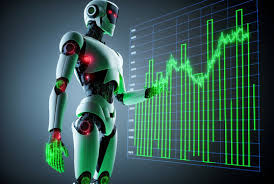In the dynamic world of financial markets, forex trading stands as a realm where fortunes are made and lost in the blink of an eye. The foreign exchange market, with its immense liquidity and volatility, offers lucrative opportunities for those who can navigate its complexities with skill and precision. However, mastering forex forex robot more than just a keen understanding of economic indicators and market trends—it demands unwavering discipline, rapid decision-making, and the ability to adapt to ever-changing conditions.
Enter the forex robot—a revolutionary tool that has transformed the landscape of currency trading. Also known as expert advisors (EAs) or algorithmic trading systems, forex robots are software programs designed to automate the process of executing trades in the forex market. These advanced algorithms are capable of analyzing vast amounts of data, identifying profitable trading opportunities, and executing trades with lightning-fast speed, all without human intervention.
The concept of automated trading is not new, but advancements in technology have propelled forex robots to the forefront of the trading world. Gone are the days when traders had to sit glued to their screens, monitoring price movements and executing trades manually. With forex robots, traders can now delegate the tedious tasks of market analysis and trade execution to sophisticated algorithms, freeing up valuable time and mental energy.
One of the key advantages of forex robots is their ability to remove human emotions from the trading equation. Fear, greed, and indecision are among the most common pitfalls that plague human traders, often leading to poor decision-making and costly mistakes. Forex robots, on the other hand, operate based on predefined rules and parameters, ensuring consistent and disciplined execution of trading strategies.
Moreover, forex robots can operate around the clock, taking advantage of trading opportunities in different time zones and capitalizing on market movements while traders sleep. This 24/7 availability allows traders to exploit even the slightest fluctuations in currency prices, maximizing profit potential and minimizing risk.
Another compelling feature of forex robots is their capacity for backtesting and optimization. Before deploying a trading strategy in live market conditions, traders can test their algorithms using historical data to assess performance and fine-tune parameters for optimal results. This iterative process of refinement enables traders to develop robust strategies that have been rigorously tested and validated, enhancing the likelihood of success in real-world trading environments.
However, despite their numerous benefits, forex robots are not without limitations and risks. Market conditions can change rapidly, and algorithms that perform well in one set of circumstances may falter in others. Moreover, forex robots are only as effective as the strategies they employ and the parameters set by their developers




